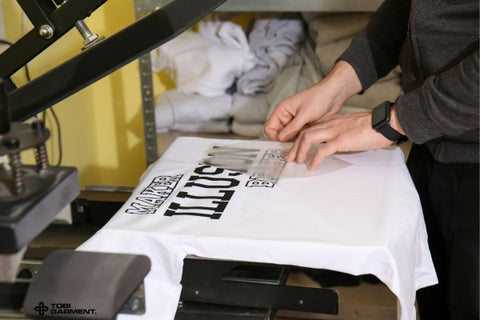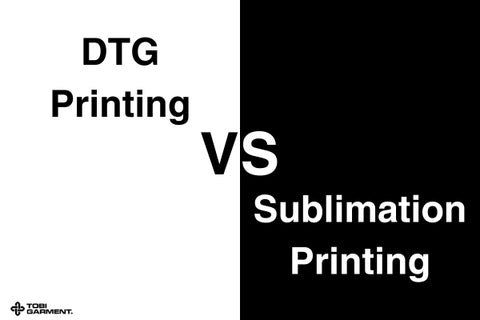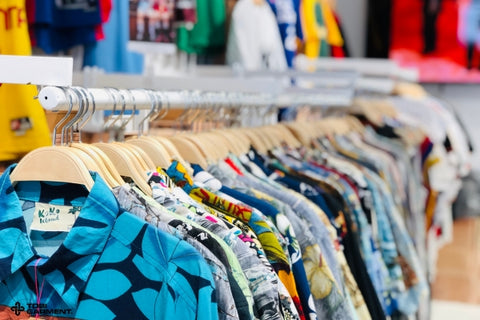
Ready to explore t-shirt printing? Whether you're a designer, entrepreneur, or style enthusiast, knowing the different types of t-shirt printing is crucial. This guide will cover popular printing methods, their pros and cons, and help you choose the best one for your needs. Elevate your t-shirt game and make a statement with the right technique!
Screen Printing: The Classic Choice for Bulk Orders
How Screen Printing Works
Screen printing, also known as silkscreen, is one of the most enduring and versatile methods of printing t-shirts. It involves creating a stencil on a mesh screen, which is then used to transfer ink onto the fabric. The process is as follows:
- A design is created and burned onto a mesh screen using a light-sensitive emulsion.
- The screen is placed on top of the t-shirt, and ink is pushed through the open areas of the stencil using a squeegee.
- The ink adheres to the fabric, creating a crisp, vibrant image.
- The t-shirt is then cured with heat to set the ink and ensure it lasts through multiple washes.

Pros of Screen Printing
- Ideal for large orders, as the setup cost is spread out over many shirts
- Produces vibrant, long-lasting prints that are soft to the touch
- Works well with a wide range of fabrics, including cotton, polyester, and blends
- Allows for precise placement of the design on the t-shirt
Cons of Screen Printing
- Not cost-effective for small orders, as the setup cost can be high
- Limited to a specific number of colors per design
- Requires a dedicated workspace and specialized equipment
Read more: How to Sell Prints on Etsy: A Comprehensive Guide
Direct-to-Garment (DTG) Printing: High-Quality Prints for Small Orders
How DTG Printing Works
Direct-to-garment printing, or DTG, is a digital printing method that uses specialized inkjet printers to apply water-based inks directly onto the t-shirt fabric. It's a great choice for small orders and complex designs. Here's how it works:
- The design is created in a digital format and uploaded to the printer.
- The t-shirt is treated with a special solution to help the ink adhere to the fabric.
- The printer applies the ink directly onto the t-shirt, creating a high-quality, full-color print.
- The t-shirt is then cured with heat to set the ink and prevent fading.

Pros of DTG Printing
- Cost-effective for small orders, as there are no setup costs
- Allows for full-color, photographic-quality prints
- Ideal for complex designs with intricate details and gradients
- Environmentally friendly, as it uses water-based inks and reduces waste
Cons of DTG Printing
- Not suitable for large orders, as the printing process is slower
- Limited to lighter-colored fabrics, as the white ink used for dark shirts can be inconsistent
- Requires a significant investment in specialized equipment
Read more: Print on Demand Stores: Easy Steps to Start Selling
Heat Transfer Vinyl (HTV) Printing: Durable and Versatile
How HTV Printing Works
Heat transfer vinyl, or HTV, is a type of printing that involves cutting a design out of a special vinyl material and then transferring it onto the t-shirt using a heat press. It's a great option for small orders and unique designs. Here's how it works:
- The design is created in a digital format and cut out of HTV using a cutting machine.
- The HTV is weeded, removing the excess material and leaving only the desired design.
- The HTV is placed on the t-shirt and covered with a protective sheet.
- The heat press applies heat and pressure to the HTV, fusing it to the fabric.
- The protective sheet is removed, revealing the finished design.

Pros of HTV Printing
- Cost-effective for small orders
- Allows for unique, custom designs
- Durable and long-lasting, with a soft hand feel
- Works well with a variety of fabrics, including cotton, polyester, and blends
Cons of HTV Printing
- Time-consuming for large orders
- Limited to simpler designs without gradients or intricate details
- Can be tricky to apply evenly and smoothly
Read more: How to Wash Screen Printed Shirts Without Damage
Dye Sublimation: All-Over Prints for Polyester Fabrics
How Dye Sublimation Works
Dye sublimation is a printing method that uses heat to transfer dye-based inks onto polyester fabrics. It's perfect for creating all-over prints that cover the entire t-shirt. Here's how it works:
- The design is printed onto a special transfer paper using a sublimation printer.
- The transfer paper is placed face-down on the t-shirt.
- Heat and pressure are applied using a heat press, causing the dye to turn into a gas and bond with the polyester fibers.
- The transfer paper is removed, revealing the finished design.
Pros of Dye Sublimation
- Allows for all-over prints that cover the entire t-shirt
- Produces vibrant, long-lasting colors that won't fade or crack
- Works well with polyester fabrics, creating a soft, comfortable feel
Cons of Dye Sublimation
- Limited to polyester fabrics, as the dye won't bond with cotton or other natural fibers
- Requires specialized equipment, including a sublimation printer and heat press
- Not suitable for dark-colored shirts, as the dye will appear muted
Read more: Personalize Your Style: Custom T-shirts Made Your Way
Embroidery: A Timeless and Luxurious Option
How Embroidery Works
Embroidery is a classic printing method that involves stitching designs onto t-shirts using a specialized machine. It's a great choice for adding a touch of elegance and sophistication to your apparel. Here's how it works:
- The design is digitized and programmed into an embroidery machine.
- The t-shirt is hooped and placed under the machine's needle.
- The machine stitches the design onto the fabric using colored threads.
- The t-shirt is removed from the hoop, and any excess threads are trimmed.
Pros of Embroidery
- Produces a high-quality, luxurious look
- Durable and long-lasting, with a raised, textured feel
- Works well with a variety of fabrics, including cotton, polyester, and blends
- Ideal for simple designs with text or logos
Cons of Embroidery
- Not suitable for large, complex designs
- Can be more expensive than other printing methods
- Limited to a specific number of thread colors per design
Read more: Print on Demand - How to Start a POD Business
Choosing the Right Printing Method for Your Needs
When selecting a printing method for your t-shirts, consider the following factors:
- Design complexity: Simple designs with limited colors may work best with screen printing or HTV, while complex designs with gradients and intricate details are better suited for DTG or dye sublimation.
- Fabric type: Screen printing and embroidery work well with a variety of fabrics, while DTG is best for cotton and dye sublimation is limited to polyester.
- Order quantity: Screen printing is ideal for large orders, while DTG, HTV, and embroidery are more cost-effective for small orders.
- Budget: Screen printing and embroidery require a higher initial investment in equipment, while DTG and HTV have lower startup costs.
FAQ
1. What is the most cost-effective printing method for small orders?
Direct-to-garment (DTG) printing and heat transfer vinyl (HTV) are the most cost-effective options for small orders, as they don't require expensive setup costs.
2. Which printing method produces the most vibrant colors?
Screen printing and dye sublimation are known for producing the most vibrant, long-lasting colors. The inks used in these methods are thick and durable, ensuring your designs pop.
3. Can I print on dark-colored shirts?
Yes, you can print on dark shirts using screen printing, DTG, or HTV. However, dye sublimation is not recommended for dark fabrics, as the dye will appear muted.
4. How durable are the prints?
Screen printing and embroidery are considered the most durable printing methods, with prints that can last for years without fading or cracking. DTG and HTV are also durable, while dye sublimation may fade over time if not properly cared for.
Read more related posts from Tobi Garment:



